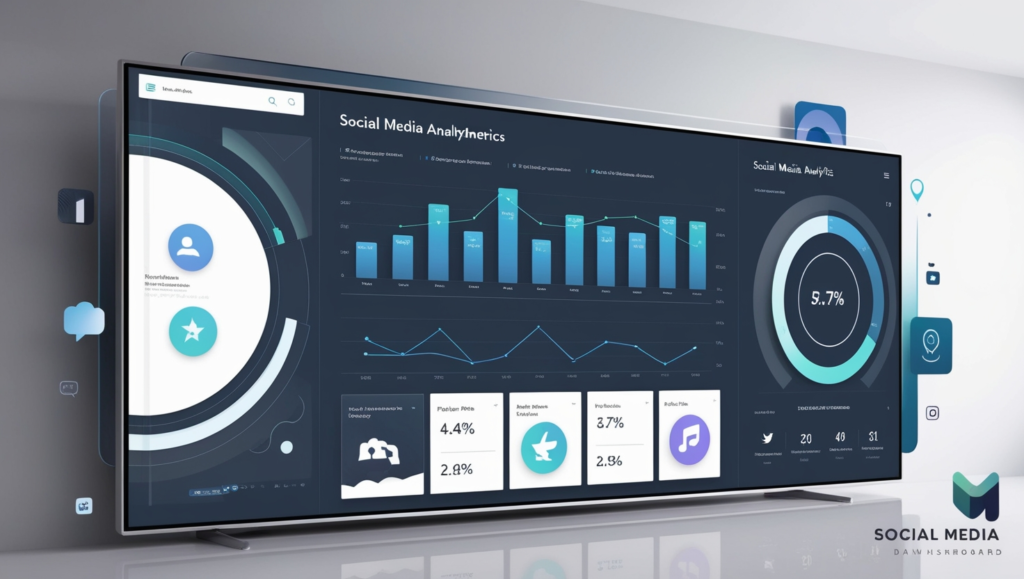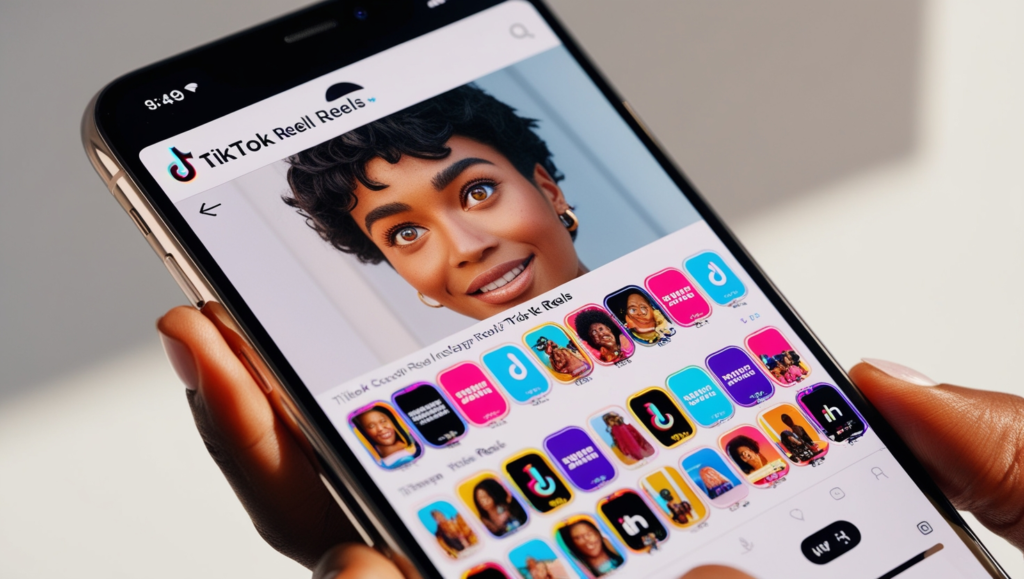Social media is a constantly changing landscape. As platforms evolve, new trends emerge, reshaping the way brands connect with their audiences. Staying ahead of these trends is crucial for anyone looking to succeed in social media marketing. By understanding and embracing the latest shifts, businesses can improve engagement, increase visibility, and drive conversions.
This article explores five key social media trends that are set to dominate in the near future. These trends include the rise of short-form video content, the growing use of AI-powered tools, the power of user-generated content, the impact of live streaming, and the growth of social commerce. Each of these trends offers unique opportunities for brands to connect with their audience in more meaningful and effective ways.
By incorporating these strategies into your social media efforts, you can ensure your brand remains relevant and continues to thrive in an ever-changing digital world.
Understanding the Role
- A social media content manager plays a vital role in shaping a brand’s online presence. They are responsible for creating, curating, and distributing engaging content across various social media platforms. Their ultimate goal is to connect with the target audience, boost brand awareness, and drive conversions.
- This professional begins by understanding the brand’s objectives and audience. Based on this, they develop tailored strategies for platforms like Instagram, Twitter, LinkedIn, and TikTok. They create compelling posts, from videos and images to written captions, that align with the brand’s voice. Curating relevant content, including user-generated content, helps add authenticity and variety.
- A significant part of the job involves analyzing performance metrics. By using tools like Hootsuite or native platform analytics, social media managers track engagement, reach, and conversions. This data helps refine strategies and ensure campaigns achieve their goals.
- In addition, social media content managers actively engage with followers. They respond to comments, messages, and reviews to foster strong relationships.
- For more information about starting a career in social media management, visit HubSpot’s Guide to Social Media Marketing. To explore tools for content scheduling, check out Hootsuite.

Crafting a Winning Strategy
Creating an effective content strategy is essential for any social media content manager aiming to build a strong online presence. A well-planned strategy helps achieve key business objectives, from increasing brand awareness to generating leads or boosting sales. To accomplish this, social media managers must follow a structured approach. This involves defining clear goals, understanding the audience, choosing the right platforms, planning a content calendar, and diversifying the content mix. Each step plays a crucial role in ensuring the strategy resonates with the target audience and delivers measurable results.
1. Define Clear Goals
The first step in crafting a winning strategy is to outline clear objectives. Social media goals vary depending on the business’s needs. Some brands may focus on increasing their follower count or enhancing engagement, while others prioritize lead generation or driving direct sales. By clearly defining these goals, social media managers can design tailored campaigns to meet specific outcomes. For example, if the goal is to increase brand awareness, the content should focus on sharing the company’s story, values, and unique offerings. Meanwhile, if the objective is to drive sales, posts might highlight product features, promotions, or customer testimonials.
2. Understand the Target Audience
Knowing the audience is critical to creating relevant and engaging content. Social media managers must research the audience’s demographics, interests, and online behaviors. This information helps identify what type of content will resonate most. For instance, if the target audience is predominantly young adults, content might include short-form videos, memes, or engaging polls. Social media analytics tools, such as Meta Business Suite or Google Analytics, can provide valuable insights into user behaviors and preferences. Understanding the audience ensures every piece of content aligns with their needs and expectations.
3. Select the Right Platforms
Not all social media platforms are created equal. Choosing the right ones is essential to maximize reach and engagement. Each platform attracts different demographics and supports specific content types. For example, Instagram and TikTok are ideal for visual and video content, while LinkedIn works better for professional networking and industry insights. By selecting platforms that align with the audience and business goals, social media managers can focus their efforts where they will have the most impact. Additionally, using platform-specific features, such as Instagram Stories or LinkedIn Articles, helps tailor content for maximum effectiveness.
4. Plan a Content Calendar
Consistency is key to maintaining audience interest and engagement. A content calendar helps social media managers plan content in advance, ensuring a steady stream of posts. The calendar should include details about the type of content, posting frequency, and promotional activities. For instance, planning a mix of promotional posts, educational content, and interactive elements (like polls or Q&A sessions) keeps the feed dynamic and interesting. Tools like Hootsuite or Trello can simplify the process by offering scheduling and organizational features. Having a calendar also makes it easier to adapt to unexpected trends or events while staying aligned with the overall strategy.
5. Diversify the Content Mix
Variety keeps the audience engaged and encourages them to interact with the brand. A well-rounded content mix combines different formats, such as text-based posts, high-quality images, videos, and stories. Each format serves a purpose: text posts can convey detailed information, while videos are great for storytelling or tutorials. Stories and live sessions offer real-time interaction, fostering a sense of community. For inspiration, managers can explore trending formats on platforms like TikTok’s Discover Page. By experimenting with content styles, social media managers can discover what works best and refine their strategy accordingly.

Essential Tools for Success
Effectively managing social media content requires the right tools to streamline workflows, enhance creativity, and measure performance. Social media content managers benefit greatly from using platforms that simplify planning, creation, and analysis. With the right combination of tools, they can save time and focus on creating impactful strategies that drive engagement and results.
1. Social Media Management Tools
Tools like Hootsuite, Buffer, and Sprout Social are invaluable for organizing and scheduling posts. They allow social media managers to plan content across multiple platforms from a single dashboard. Features like automated posting and performance tracking make it easier to maintain consistency. These tools also provide options to monitor audience interactions and trends in real time, ensuring timely responses and informed adjustments to strategies.
2. Content Creation Tools
Visual and written content is the cornerstone of any social media strategy. Tools such as Canva and the Adobe Creative Suite empower creators to design professional graphics, edit videos, and craft visually appealing posts. Canva offers user-friendly templates for beginners, while Adobe’s suite is ideal for more advanced designs. These tools help brands maintain a cohesive visual identity and produce high-quality content tailored to platform requirements.
3. Analytics Tools
Measuring performance is critical to refining social media strategies. Tools like Google Analytics and platform-native analytics (e.g., Instagram Insights, Twitter Analytics) provide detailed data on reach, engagement, and audience behavior. These insights help managers understand what resonates with their audience and identify areas for improvement. By combining analytics tools with management platforms, social media managers can track key performance indicators (KPIs) and optimize campaigns for better results.

Key Skills for Social Media Mastery
A social media content manager plays a crucial role in shaping how a brand interacts with its audience online. To excel in this position, it’s essential to develop a diverse set of skills that encompass creativity, communication, adaptability, analytics, and platform expertise. These competencies allow managers to craft engaging content, navigate ever-changing trends, and deliver measurable results that align with business objectives.
1. Strong Writing and Communication Skills
Writing is at the core of social media management. A skilled manager can craft compelling captions, create engaging posts, and develop clear calls to action that resonate with the target audience. Whether it’s a humorous tweet or an inspiring Instagram story, the message must align with the brand’s voice. Communication extends beyond writing; it also involves engaging with the audience through comments, messages, and collaborations. Strong communication ensures that a brand connects authentically with its followers, fostering trust and loyalty.
2. Creativity and Innovation
In a crowded digital space, creativity sets a brand apart. Social media content managers must consistently develop fresh and engaging ideas to captivate their audience. This might involve experimenting with new content formats, incorporating trending topics, or leveraging user-generated content. Creativity also applies to problem-solving. When campaigns underperform, innovative thinking can help reimagine strategies for better outcomes. Platforms like Canva and Pinterest can inspire new ideas and provide tools for visual creativity.
3. Adaptability to Trends and Platform Changes
Social media is constantly evolving, with platforms updating their features and algorithms regularly. A successful manager stays informed about the latest trends, from viral challenges to emerging platforms. They also adapt quickly to algorithm changes that impact content visibility. For example, Instagram’s shift towards prioritizing Reels requires managers to pivot their strategies toward video content. Following resources like Social Media Examiner or Sprout Social’s Insights can help stay ahead of changes.
4. Analytical Skills for Data-Driven Decisions
Analytics play a vital role in determining the success of a social media strategy. Managers must understand metrics like engagement rate, reach, impressions, and click-through rates. Using tools like Google Analytics or native platform insights helps track performance and identify what works best. Analytical skills enable managers to make data-driven decisions, optimizing content and campaigns to achieve better results. This iterative process ensures continuous improvement and maximizes return on investment (ROI).
5. Social Media Savviness
Finally, mastering the nuances of different platforms is essential. Each platform has unique features, audience preferences, and content styles. For instance, TikTok emphasizes short, creative videos, while LinkedIn favors professional and informative content. A savvy manager knows how to tailor posts to suit each platform while maintaining a consistent brand voice. They also leverage platform-specific tools like Instagram Stories, LinkedIn Articles, or Twitter Spaces to enhance audience engagement. Resources such as HubSpot’s Social Media Marketing Guide can provide deeper insights into platform-specific strategies.
Targeting the Right Audience
Understanding and connecting with your target audience is essential for a successful social media strategy. By identifying who your audience is and what they care about, you can create tailored content that resonates and drives engagement. Using a combination of demographics, competitor analysis, creative content, and social listening, you can ensure your strategy effectively reaches the right people and meets your goals.
1. Leverage Demographics and Interests
Start by identifying your audience’s key demographics, such as age, gender, location, and interests. Most social media platforms, including Facebook Ads Manager, offer powerful targeting tools that allow you to narrow down your audience based on these criteria. For instance, if your business caters to fitness enthusiasts, you can target users who follow fitness influencers or engage with fitness-related content. Customizing your campaigns in this way increases the likelihood of reaching people who are genuinely interested in your offerings.
2. Analyze Competitor Audiences
Observing your competitors can provide valuable insights into your potential audience. Study their followers, content engagement, and popular posts to identify patterns. This analysis can reveal audience segments that overlap with your goals or inspire ideas to refine your strategy. Tools like SEMrush or BuzzSumo can help uncover key metrics and trends in your competitors’ social media performance. Use these insights to tailor your messaging and stand out in your niche.
3. Develop Engaging, Audience-Centric Content
Content is the bridge that connects your brand to your audience. Create posts that speak directly to their needs, aspirations, or challenges. Whether it’s educational content, inspirational stories, or entertaining videos, ensure your posts add value. For instance, a skincare brand targeting young adults could share quick beauty tips or product tutorials that address common concerns. Engaging visuals, clear messaging, and a consistent tone build a connection that encourages loyalty and interaction.
4. Utilize Social Listening to Stay Relevant
Social listening is a powerful way to understand your audience better. By monitoring online conversations, trends, and hashtags, you can identify what matters most to your target audience. Tools like Brandwatch or Sprout Social help track mentions, sentiment, and emerging topics. These insights enable you to tailor content, respond to concerns, and participate in trending conversations. This proactive approach strengthens your relationship with your audience and positions your brand as a relevant voice in your industry.

Boosting Engagement
Increasing engagement on social media is key to building a loyal audience and driving meaningful interactions with your brand. Engagement includes likes, comments, shares, and clicks, which indicate how well your content resonates. To achieve higher engagement, employ strategies that encourage active participation and make your content stand out. From sparking conversations to leveraging the right visuals, here are five effective tactics to enhance social media engagement.
1. Ask Questions and Encourage Comments
One of the simplest ways to increase engagement is by asking questions in your posts. Open-ended questions invite your audience to share their opinions, stories, or preferences. For instance, a food brand might ask, “What’s your favorite comfort food?” or “Which recipe would you like us to feature next?” These prompts not only encourage comments but also provide valuable insights into audience interests. Additionally, replying to comments keeps the conversation going, making followers feel valued and fostering a sense of community.
2. Run Contests and Giveaways
Contests and giveaways are a surefire way to generate excitement and buzz around your brand. People are naturally drawn to the opportunity to win something. Structure your giveaway with simple rules, such as following your account, tagging friends, or sharing your post. This increases visibility while attracting new followers. For example, you could offer a free product or exclusive service as a prize. To ensure success, use platforms like RafflePress to organize and track your campaigns.
3. Collaborate with Influencers
Partnering with influencers can help expand your reach and boost credibility. Influencers have established trust with their followers, making their endorsements highly effective. Choose influencers whose values align with your brand and whose audience matches your target demographics. For example, a fitness brand could collaborate with a wellness influencer to promote products through sponsored posts or live sessions. Platforms like Upfluence can help you identify and connect with the right influencers.
4. Use Eye-Catching Visuals
Visual content is crucial for grabbing attention in crowded social media feeds. High-quality images, vibrant graphics, and engaging videos can significantly increase the chances of your content being noticed and shared. Tools like Canva and Adobe Spark make it easy to create professional visuals, even without a design background. Adding elements like captions, animations, or interactive infographics can further enhance the visual appeal and encourage interaction.
5. Post at Optimal Times
Timing matters when it comes to engagement. Posting when your audience is most active increases the likelihood of your content being seen and interacted with. Analyze your audience’s behavior using analytics tools like Hootsuite or platform insights (e.g., Instagram Insights, Facebook Analytics) to determine peak activity hours. For instance, studies often show higher engagement during lunch breaks or evenings, but your specific audience may vary. Regularly testing and adjusting your posting schedule ensures maximum reach.

Navigating Challenges and Crises
Negative feedback or a crisis can quickly escalate on social media, making it essential for brands to handle such situations with care. How you respond can significantly impact your reputation and customer trust. By taking immediate action, demonstrating empathy, resolving the issue privately, and monitoring the conversation, you can effectively manage negative situations and turn them into opportunities for growth. Here’s how to address negative feedback or a crisis step by step.
1. Respond Promptly
Timely responses are crucial when handling negative feedback or a crisis. Ignoring the situation can make it worse and lead to further frustration. As soon as you notice the issue, acknowledge it in a professional and respectful manner. A quick response shows your audience that you care about their concerns and are actively working to resolve the matter. This can help prevent the situation from spiraling out of control. For example, if a customer has a complaint about a product, respond within hours to show that their feedback is valued.
2. Apologize Sincerely
If the feedback or crisis involves a mistake or shortcoming on your part, offer a genuine apology. Acknowledge the issue and express empathy for any inconvenience caused. A sincere apology can go a long way in rebuilding trust and showing that you understand the impact of the situation. Avoid making excuses, and instead focus on taking responsibility. For example, if there was a delay in product delivery, apologize for the inconvenience and assure the customer that the issue is being addressed. Being transparent about the situation helps to humanize your brand.
3. Resolve the Issue Privately
If possible, take the conversation offline or move it to a private setting, such as direct messages or email. Handling the situation privately prevents further public escalation and gives you the space to address the matter in detail. For example, if a customer is unhappy with a service, ask them to DM you or email for more information. This approach also provides the opportunity to offer a more personalized resolution, which can lead to a more positive outcome. Keep the public post minimal, directing the conversation to a more secure and private platform for further resolution.
4. Monitor the Conversation
After addressing the initial feedback or crisis, continue to monitor the situation. Keep track of any new comments or follow-up questions from your audience. Stay engaged by responding to additional concerns promptly and professionally. Monitoring helps to ensure that the issue doesn’t resurface and that your audience feels heard and valued. It also provides an opportunity to further clarify any misunderstandings. Tools like Sprout Social or Hootsuite can help track ongoing conversations and manage interactions effectively.

Measuring Success
To determine the effectiveness of your social media strategy, it’s essential to monitor key performance metrics. These metrics provide valuable insights into how your content resonates with your audience, how well your efforts align with your goals, and whether you’re achieving the desired results. By tracking engagement, growth, traffic, conversions, and brand mentions, you can refine your strategy to improve outcomes. Here are the critical metrics to focus on and why they matter.
1. Engagement Rate
Engagement rate is one of the most important metrics to measure your content’s effectiveness. It includes interactions such as likes, shares, comments, and click-through rates. A high engagement rate indicates that your audience finds your content valuable and is actively participating. To calculate engagement rate, divide the total engagement actions (likes, comments, shares) by your total follower count, then multiply by 100. This gives you a percentage that shows how engaged your followers are. Monitoring engagement helps identify what types of content your audience prefers and informs future posts.
2. Follower Growth
Follower growth is another essential metric that reflects the overall popularity and reach of your social media accounts. It tracks the increase in the number of people following your profiles over time. A steady rise in followers shows that your content is attracting more people, which can lead to greater exposure and more potential customers. However, it’s important to assess the quality of your followers, not just the quantity. Focus on growing an engaged audience who is genuinely interested in your brand. Tools like Hootsuite Analytics can help you track this growth over time.
3. Website Traffic
Tracking website traffic from social media helps you understand how well your posts drive users to your website. By monitoring referral traffic, you can see which platforms are sending the most visitors and which types of content are most effective in encouraging clicks. Google Analytics can be integrated with social media to track these referrals. Website traffic is crucial because it indicates how successful you are at guiding your audience from social media engagement to deeper brand interactions, like browsing your products or reading your blog.
4. Conversion Rate
The conversion rate measures how many social media users take the desired action after interacting with your content. This could include making a purchase, signing up for a newsletter, downloading a resource, or filling out a contact form. To calculate the conversion rate, divide the number of conversions by the number of visitors and multiply by 100. High conversion rates show that your social media efforts are successfully driving people toward actions that align with your business goals. Tracking conversions helps you optimize your strategy to ensure you’re not only reaching people but motivating them to act.
5. Brand Mentions
Monitoring brand mentions on social media is an excellent way to track sentiment and visibility. Both positive and negative mentions provide insights into how your audience perceives your brand. Analyzing this metric can also reveal potential customer service issues or opportunities for engagement. Tools like Brandwatch and Mention allow you to track mentions across various platforms. By keeping tabs on brand mentions, you can address concerns, capitalize on positive feedback, and adjust your content to better align with audience preferences.
Future Trends in Social Media Content Management
Social media is constantly evolving, with new trends emerging that can significantly impact your strategy. Keeping an eye on these trends ensures that your brand stays relevant and can effectively engage with its audience. As we look toward the future, several key trends are expected to dominate the social media landscape. These include short-form video content, AI-powered tools, user-generated content, live streaming, and social commerce. Let’s explore each of these trends and how they can enhance your social media efforts.
1. Short-Form Video Content
Short-form video content has become a powerhouse in social media marketing. Platforms like TikTok and Instagram Reels have seen explosive growth, and this format is expected to continue dominating. With shorter attention spans, users prefer quick, engaging content that delivers value instantly. Videos under 60 seconds are perfect for capturing attention, whether they showcase product features, behind-the-scenes moments, or tutorials. As more users turn to these platforms, incorporating short-form videos into your strategy will help you stay relevant and increase engagement. Focus on creativity and authenticity to connect with your audience in a fun and impactful way.
2. AI-Powered Tools
AI technology is revolutionizing how social media managers create and analyze content. AI-powered tools can help automate time-consuming tasks, such as scheduling posts or responding to common customer inquiries. These tools also enable you to generate content ideas based on trending topics, analyze performance data, and even optimize your content for maximum reach. By using AI to streamline processes and gather insights, you can make data-driven decisions to improve engagement. Tools like Hootsuite’s Social Media Management and Canva’s AI-powered design features are excellent examples of how AI can enhance social media strategies.
3. User-Generated Content
User-generated content (UGC) has gained significant traction in recent years, and it’s a trend that will continue to grow. Encouraging your audience to create and share content related to your brand is a powerful way to build trust and authenticity. UGC can include reviews, testimonials, photos, videos, or any content created by your followers. It not only increases engagement but also fosters a sense of community and loyalty. Sharing UGC on your own channels highlights the connection between your brand and your customers, making them feel valued and appreciated.
4. Live Streaming
Live streaming has become a dynamic way to engage with audiences in real-time. Whether for product launches, Q&A sessions, or behind-the-scenes looks at your business, live streaming allows you to connect with followers instantly. This real-time interaction makes your content more personal and authentic, helping to build stronger relationships with your audience. Platforms like Instagram Live, Facebook Live, and YouTube Live make it easier than ever to engage with viewers. As live streaming continues to grow in popularity, it’s a great opportunity to interact directly with your audience, answer questions, and showcase your products or services in action.
5. Social Commerce
Social commerce is the seamless integration of e-commerce within social media platforms, allowing users to shop directly through posts, ads, and product tags. Platforms like Instagram and Facebook have already rolled out social shopping features, making it easier for businesses to sell products without the need for customers to leave the platform. This trend is expected to grow as more consumers shop online through social media. By leveraging social commerce, you can drive direct sales, increase brand exposure, and provide a smoother shopping experience for your audience. Consider utilizing features like shoppable posts and integrating e-commerce platforms to turn your social media channels into powerful sales tools.
